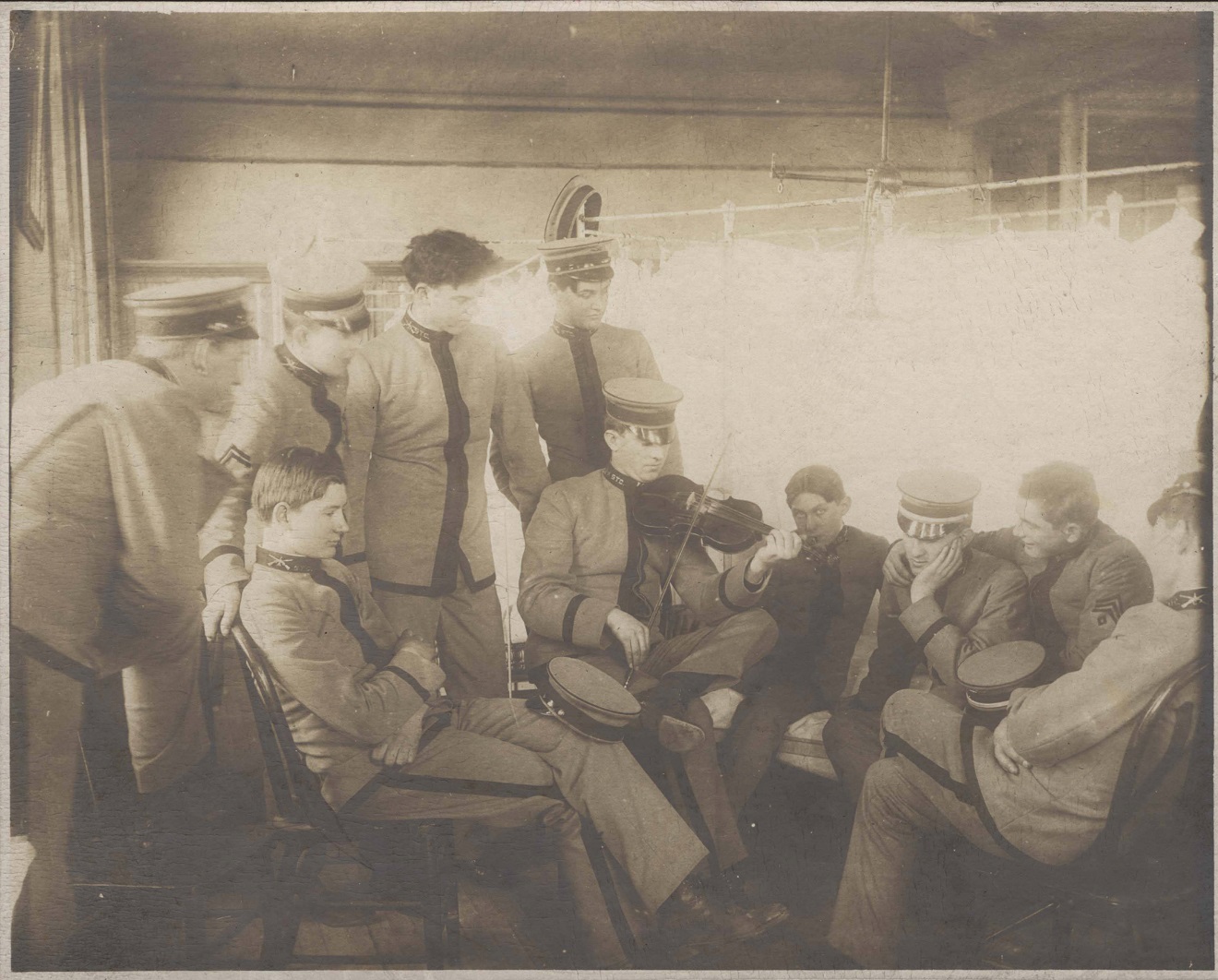The start of a new semester means that many students are settling into life in the St. Thomas residence halls. Some may chafe at the rules and regulations that govern their lives as a resident student. But the rules may not seem so bad when one looks at what life was like for students living on campus in the past.
In 1900, the brand-new Dormitory Building opened on campus. Students who boarded there lived in on the third floor in one of two large open dormitory rooms. The building also contained many of their classrooms, a study hall, apartments for professors and a gymnasium. All aspects of a student’s life were strictly regulated during this period. Boarder students were not allowed to leave campus except in unusual circumstances, and then only with the permission of the president of St. Thomas. Outside visitors were strictly limited to Wednesday and Sunday afternoons, when parents or guardians could come to campus to visit. The college authorities could even supervise the ingoing and outgoing correspondence of a student, with the exception of letters sent to a student's own family.
By the middle of the 20th century, resident students lived primarily in Ireland Hall or, beginning in 1959, Dowling Hall. Each residence hall floor had a dean, usually a priest, who lived on the floor with them and oversaw the discipline of the students. In the early 1950s, students who wished to leave campus after 7 p.m. were still required to apply to their dean for a pass. Leaving campus in the evening was seen as a privilege and was granted only once a week to first-year students and twice a week to sophomores. Continuing well into the 1960s, passes were also required for students under the age of 21 who wished to leave campus for the weekend. Those passes were granted only to those who provided a letter of permission from their parents.
The social changes of the 1960s and early 1970s had an influence in big and small ways on the lives of St. Thomas residents living in Brady, Dowling and Ireland Halls. The long-standing rule which banned the wearing of jeans in the college dining hall was rescinded by 1970. In 1972, a petition from the College Life Committee led to the rule change which allowed female visitors to student rooms during specified hours. Previously, the students of the (then) all-male St. Thomas were allowed to meet female visitors only in the lounges of their residence halls.
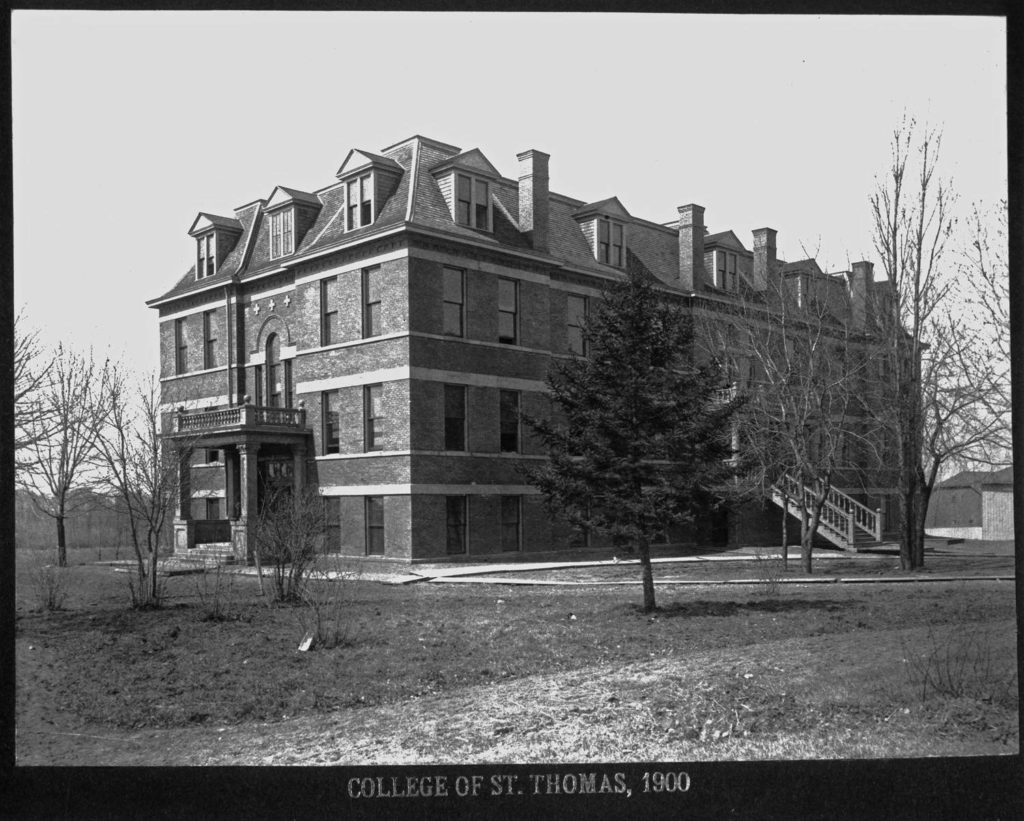
The new Dormitory Building, 1900. 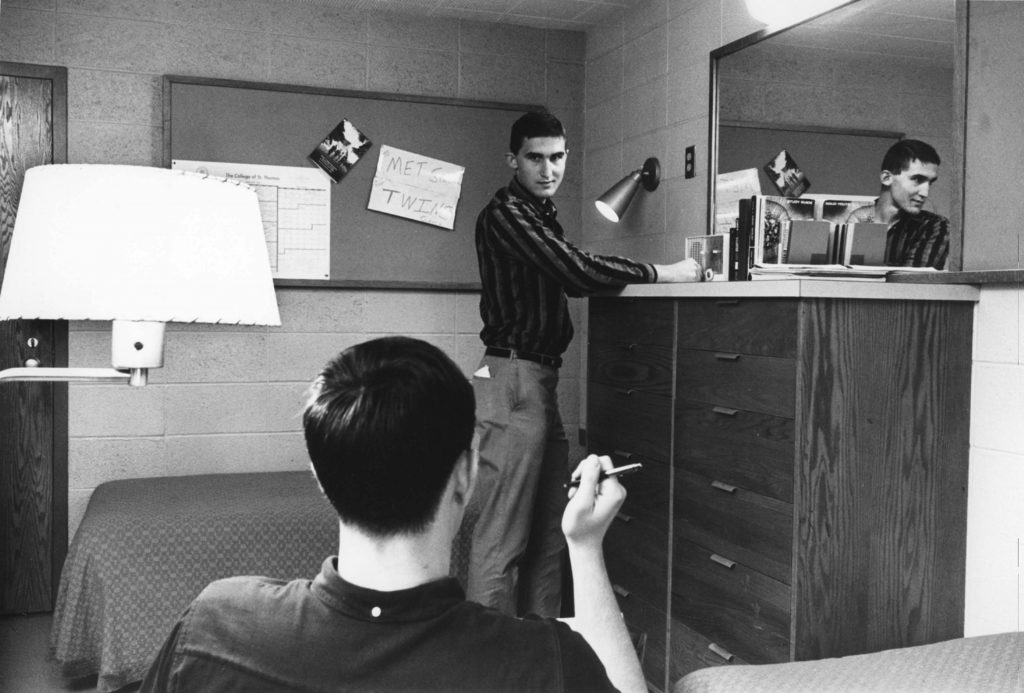
Two students in their room in Dowling Hall, 1965. 
Three students in the John Paul II Hall lounge, 1980. 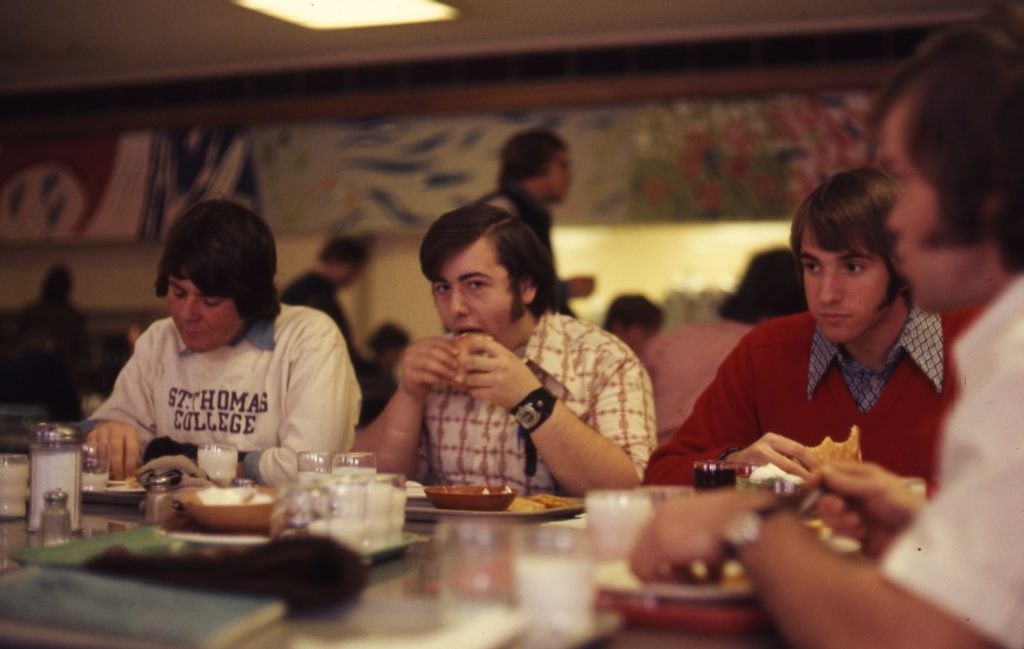
Students eating in the Murray Hall Dining Room, 1974. 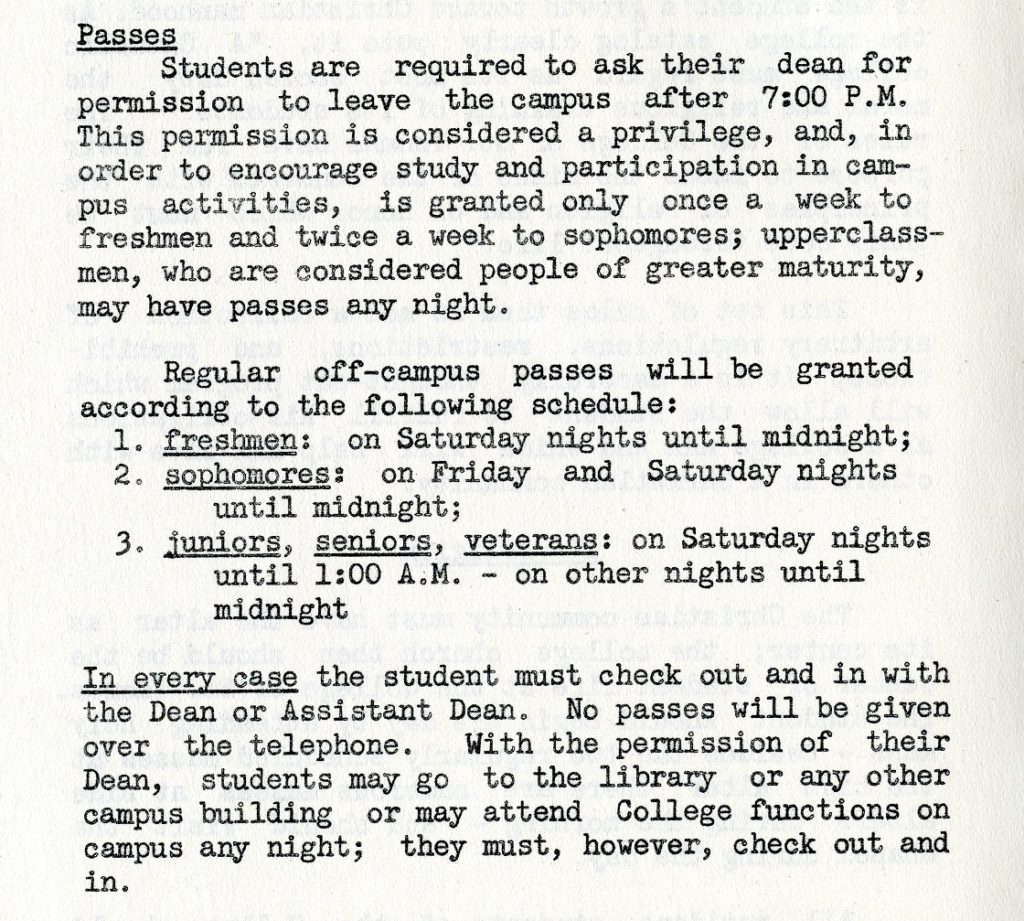
Excerpt from the Resident Student Handbook, 1950. 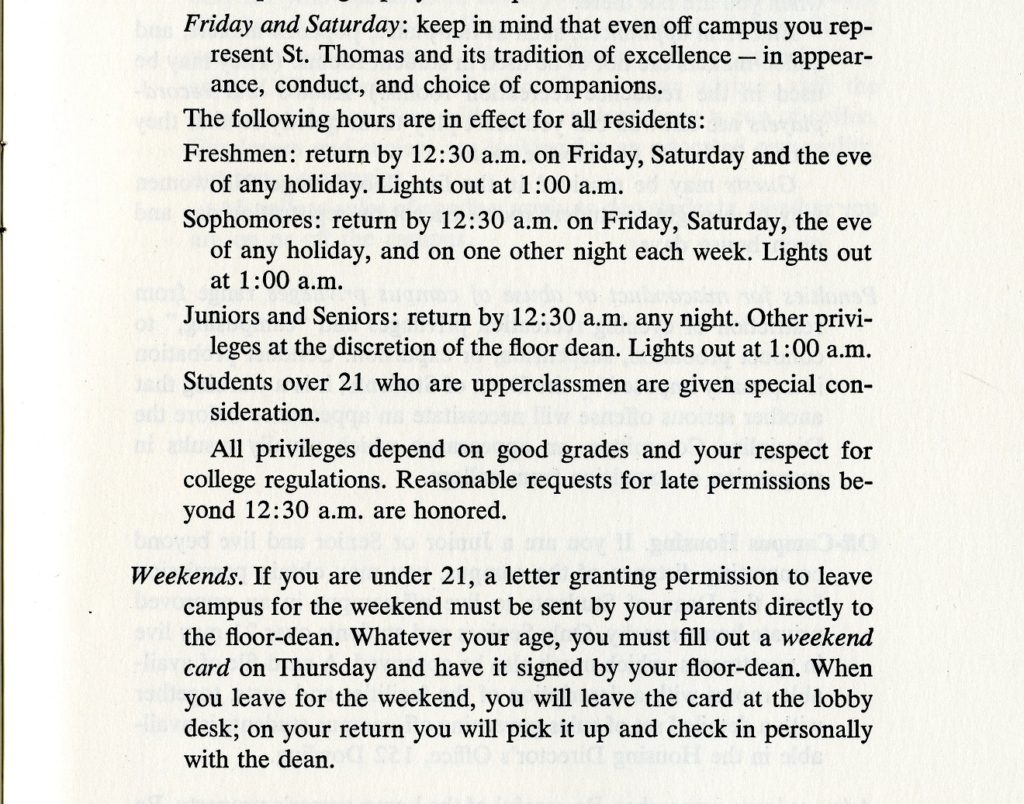
Excerpt from the Student Handbook, 1962.
More Tales from the Archives
-
Tales from the Archives: Summer Programs on Campus
People & Culture -
Tales from the Archives: Lake Mennith and Mennith Hall
University News -
Tales from the Archives: Our Lady Queen of Peace
Faith and Mission -
Tales from the Archives: First Asian Professor at St. Thomas
Diversity, Equity and Inclusion
